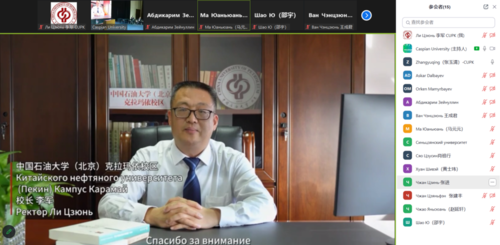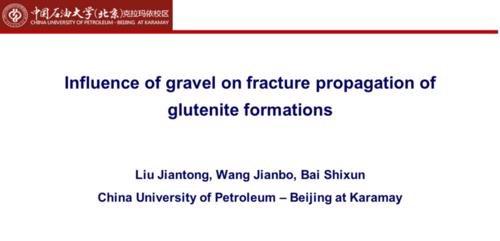
NEWS
From November 10th to 11th, the 4th Eurasian Innovation Forum, hosted by the Ministry of Science and Higher Education of Kazakhstan and the National Commission of UNESCO in Kazakhstan, and organized by the Eurasian Innovation Alliance and Caspian University of Kazakhstan, was held in Almaty, Kazakhstan.

At the opening ceremony, President Li Jun of the campus congratulated on the successful convening of the forum and delivered a speech on behalf of China University of Petroleum (Beijing) Karamay Campus. He stated that this forum is a powerful measure to further improve the international cooperation mechanism of the "Belt and Road" initiative. Leveraging its geographical location in the hinterland of the Eurasian continent and its advantages in engineering education, the campus will strive to promote cooperation with universities from various countries around the world, especially those in Kazakhstan, to jointly cultivate high-level, applied, and international talents. As a university with distinct energy characteristics, the campus will establish a talent cultivation philosophy of sustainable development, strengthen technological innovation support for sustainable development, carry out international exchanges and cooperation in serving sustainable development, and promote international exchanges and cooperation in the field of "double carbon" to a deeper level, higher standard, and broader scope.
More than 70 experts and scholars from over 20 institutions in Kazakhstan, China, Russia, Tajikistan, India, Georgia, and other countries participated in the event through a combination of online and offline methods. A research team composed of teachers Liu Jiantong, Wang Jianbo, and Bai Shixun from the campus delivered a special report titled "The Impact of Gravel on the Propagation of Sandstone Fractures" at the sub-forum themed "Modern Scientific and Technological Design".

Recently, a delegation led by Nursenov Koldasbek, President of Caspian University of Kazakhstan, visited the campus for a field investigation and exchange. The two universities reached a consensus on cooperation in areas such as teacher training, joint student cultivation, scientific research cooperation, and joint laboratory construction.